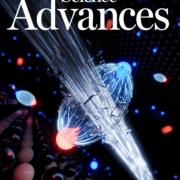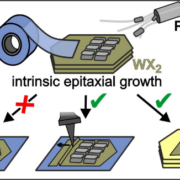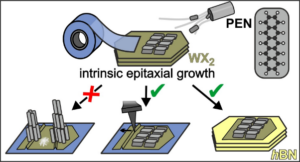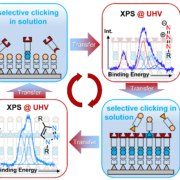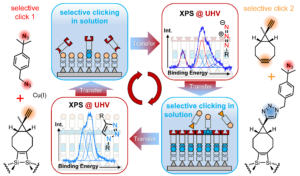Probing electron-hole Coulomb correlations in the exciton landscape of a twisted semiconductor heterostructure – Publication by B9 (Malic) in Science Advances
In a joint study including the experimental group of Stefan Mathias from the University of Göttingen and the theoretical group of Ermin Malic the ultrafast charge transfer in twisted van der Waals heterostructures was studied.
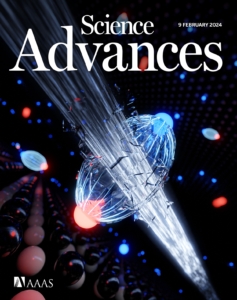
Cover of Science Advances Volume 10 Issue 6. An ultrashort light pulse breaks apart an exciton, comprised of an electron bound to an electron hole.
In two-dimensional semiconductors, cooperative and correlated interactions determine the material’s excitonic properties and can even lead to the creation of correlated states of matter.
In a joint experiment theory study, the research groups of Stefan Mathias (Göttingen) and Ermin Malic (Marburg) have studied the ultrafast charge transfer in twisted van der Waals heterostructures. The researchers found that the transfer of an excitons hole across a type II band-aligned heterostructure leads to an unexpected sub-200-femtosecond upshift of the single-particle energy of the electron being photoemitted from the two-particle exciton state. While energy relaxation usually leads to an energetic downshift of the spectroscopic signature, is was shown that this upshift is a clear fingerprint of the correlated interaction of the electron and hole parts of the exciton.
In this way, time-resolved photoelectron spectroscopy is straightforwardly established as a powerful method to access electron-hole correlations and cooperative behavior in quantum materials. The joint work highlights this capability and motivates the future study of optically inaccessible correlated excitonic and electronic states of matter.
Publication
J.P. Bange, D. Schmitt, W. Bennecke, G. Meneghini, A.A. Al Mutairi, K. Watanabe, T. Taniguchi, D. Steil, S. Steil, R.T. Weitz, G.S.M. Jansen, S. Hofmann, S. Brem, E. Malic, M. Reutzel, S. Mathias
Probing electron-hole Coulomb correlations in the exciton landscape of a twisted semiconductor heterostructure
Sci. Adv. 10 (2024) eadi1323 DOI:10.1126/sciadv.adi1323
Contact
Prof. Dr. Ermin Malic
Philipps-Universität Marburg
SFB 1083 project B9
Tel.: 06421 28-22640
EMAIL

